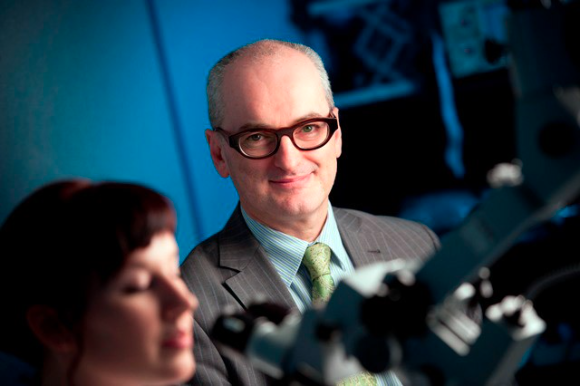New hub for biomedical engineering research named after inventor of cochlear implant

A new institute that brings together biomedical engineers, clinical researchers and industry partners to develop real-world solutions for public health has been launched.
Located in the Melbourne Biomedical Precinct, the Graeme Clark Institute for Biomedical Engineering (GCI) will be a hub for University of Melbourne researchers and industry partners to collaborate on developing new bionic devices, implants, drug treatments and assistive technologies like prosthetics, as well as diagnostics.
The institute is named after Professor Graeme Clark who invented the Bionic Ear along with his University of Melbourne colleagues, the first prototype multiple electrode implant device that successfully improved the ability of deaf people to understand speech.
The inaugural Director of the Graeme Clark Institute Mark Cook said the institute will link clinical and engineering fields in the pursuit of new solutions to public health.
“It’s fair to say that no biomedical engineering institutes, either in Australia or the wider world, have the scope and scale of the Graeme Clark Institute,” said Professor Cook.
“The institute is in a unique position to capitalise on multi-partner collaborations that are critical to innovation and commercialisation. The novelty of the solutions we will develop comes through the direct interaction of the Melbourne School of Engineering, the Faculty of Medicine, Dentistry and Health Sciences and the Faculty of Science.”
GCI’s success will be measured in the impact of clinically-driven research that solves clinical needs and engagement with industry to translate that research into clinical practice.
GCI researcher and Head of the Department of Biomedical Engineering at the Melbourne School of Engineering David Grayden said the University’s position as one of the top centres for biomedical engineering research in the world means it is well-placed to make significant contributions to the field.
“Projects will include modelling the human body in 3D to virtually assess and insert implants for joint replacements, testing the University’s world-first stentrode device in human trials, and building on its position as the top university for mechano-pharmacology, where tissues cells are mechanically measured to develop effective drug therapies,” Professor Grayden said.
Read more about the Graeme Clark Institute.